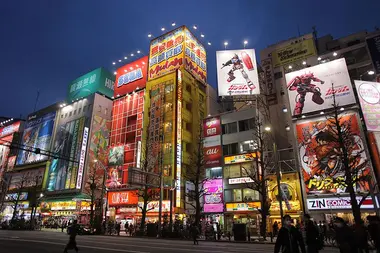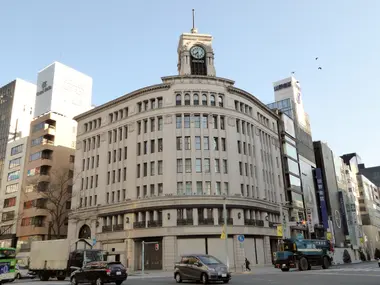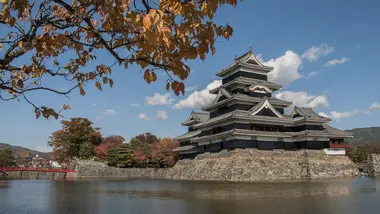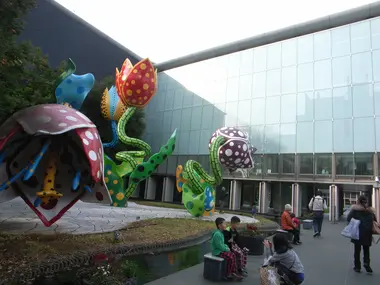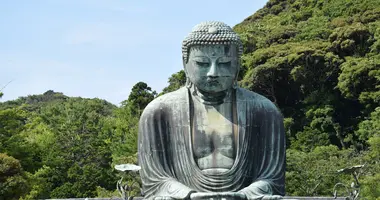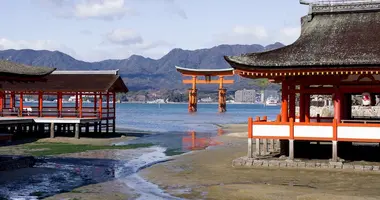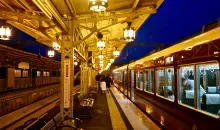How to get from Tokyo to Matsumoto
- Published on : 02/05/2024
- by : Joshua
- Youtube
Use the Azusa Limited Express Train to get from the metropolitan capital of Japan, Tokyo, to the historically rich but modest town of Matsumoto in Nagano Prefecture!
Getting from Tokyo to Matsumoto with the Azusa Limited Express Train
Matsumoto Station
Central Japan is filled with great destinations with varying atmospheres and appeals. Tokyo is the largest city in the world and the metropolitan capital of Japan. Matsumoto is primarily known for its famous castle, which stands as a monument to the region's history. There’s also a medley of soothing hot springs and picturesque streets in this modest town in Nagano Prefecture.
The two destinations are easily traveled between using the Chuo Main Line, operated by Japan Railways. Travelers will go from Shinjuku Station, the world’s busiest train station, out to Matsumoto Station. For Tokyo to Matsumoto, the Azusa Limited Express Train will be the train to take on this line, and on the way, enjoy gorgeous views of Tokyo’s recongizable architecture that slowly transitions to the rolling fields, rivers, and gargantuan mountains of the Japanese countryside.
Trains available on this itinerary:
| Azusa Limited Express Train |
Reserving seats on the Limited Express Trains
Individual ticket buyers and Japan Rail Pass holders can reserve seats on JR Chuo Limited Express Trains in advance of boarding. Since many of these feature non-reserved vehicles with seats available on a first-come, first-served basis, reservations are not necessarily necessary. Usually, these are the automobile numbers 1–4.
Tickets with reserved seats are available for JR Limited Express Trains, ensuring that there will be space to sit during the journey.
Oversized Baggage on Limited Express Trains
There are no special regulations regarding excessive baggage on Limited Express Trains or other Shinkansen lines, such as the Hokuriku Shinkansen, unlike on the Tokaido-Sanyo Shinkansen bullet trains. To maximize mobility and minimize disruption to other passengers, we do recommend being aware of bulky and heavy luggage when traveling.
Any piece of luggage measuring 160 cm or more in total is deemed big on JR Tokaido-Sanyo Shinkansen bullet trains, therefore, be advised that storing luggage that meets this criteria on Japanese trains may be more challenging. If your itinerary calls for riding the Tokaido-Sanyo Shinkansen, be advised that there will be specific rules regarding reservations for using the larger luggage compartment on particular commutes.
Exploring Tokyo
Before the Meiji Restoration, Edo was the name of the capital city of Japan, which is now named Tokyo. Its diverse and rich culture is a fitting reflection of the fact that it is currently the world's most populous city. This metropolitan area offers something for everyone, with bustling activity in its more central locations and calm, cozy neighborhoods strewn throughout.
Akihabara and Nakano are great places for fans of anime and Japanese popular culture to find a second home. Roppongi offers plenty of activities for those seeking a night on the town. Trendy areas like Kichijoji and Shimokitazawa offer a glimpse into the tastes of Tokyo's trendy people, and Ginza and Higashi Azabu are definitely must-visits for anyone looking to spend a day indulging in upscale dining and shopping.
Tokyo's vast public transit system, which makes getting around the city easy, is one of the city's main attractions. This is particularly for JR Pass holders, who will have unrestricted use of the JR Lines both inside Tokyo and while leaving. The Shinkansen Bullet Train stops at Tokyo Station, Shinagawa Station, and Ueno Station.
To get to Matsumoto from Tokyo, the Chuo Main Line bullet train is ridden from Shinjuku Station, the busiest train station in the world, with upwards of 3.5 million people commuting through it daily. The surroundings of Shinjuku Station are a treasure trove of discovery, with quality shopping, nice restaurants, and other spots to keep anyone entertained all around.
Exploring Matsumoto
The prefecture of Nagano is one of very few prefectures in Japan that are fully landlocked, and it trades the common beachside views of the archipelago for rolling mountains, rivers, and valleys. Within Nagano, the town of Matsumoto is known as a treasure trove of Japanese history and embodies the more modest ends of life on the island nation.
Matsumoto’s most indicative attraction is, without-a-doubt, Matsumoto Castle. Standing tall with a surrounding moat and prominent surrounding grounds consisting of a market street and shrines. Matsumoto Castle is actually one of only five castles in the entirety of Japan designated as an official “national treasure.”
It’s main keep was originally erected in the late 16th century during the Sengoku Period, with much of the original structure remaining. The castle held a prominent role in the Japanese political landscape through the Tokugawa Shogunate period as well, making Matsumoto a historically significant destination worth traveling to for any history buff.
Matsumoto is also a prominent spot for the arts. Esteemed contemporary artist, Yayoi Kusama, famous for her eccentric and colorful designs utilizing polka dot patterns, as well as other techniques, originally hails from Matsumoto. Her permanent collection can be found at the Matsumoto City Museum of Art.
Nagano, and Matsumoto in particular, are lauded locations for gastronomy. As previously mentioned, the wide-ranging prefecture has no seacoasts, making its culinary identity largely defined by the natural landscapes of the mountains and rivers that run through it.
From this, a medley of hand-foraged mountain vegetables and freshwater river fish are staples of the Nagano diet. Also a famous calling card for the prefecture are the crisp apples, renowned as some of the best in the country alongside the ones grown in Aomori. Other staples of Nagano include the handcut soba noodles, pristine rice that benefits from the rich soils of the area thanks to the snowfall during winter, and rich miso!
Moving inland to unique adventures!
Thanks to the Azusa Limited Express Train, seeing both ends of Japanese society is made easy! Go from the literal most populated metropolitan in the entire world, Tokyo, and take a short train ride out to Matsumoto in Nagano to see a more modest, but culturally significant locale that is sure to satisfy any lover of history, art, and cuisine!

